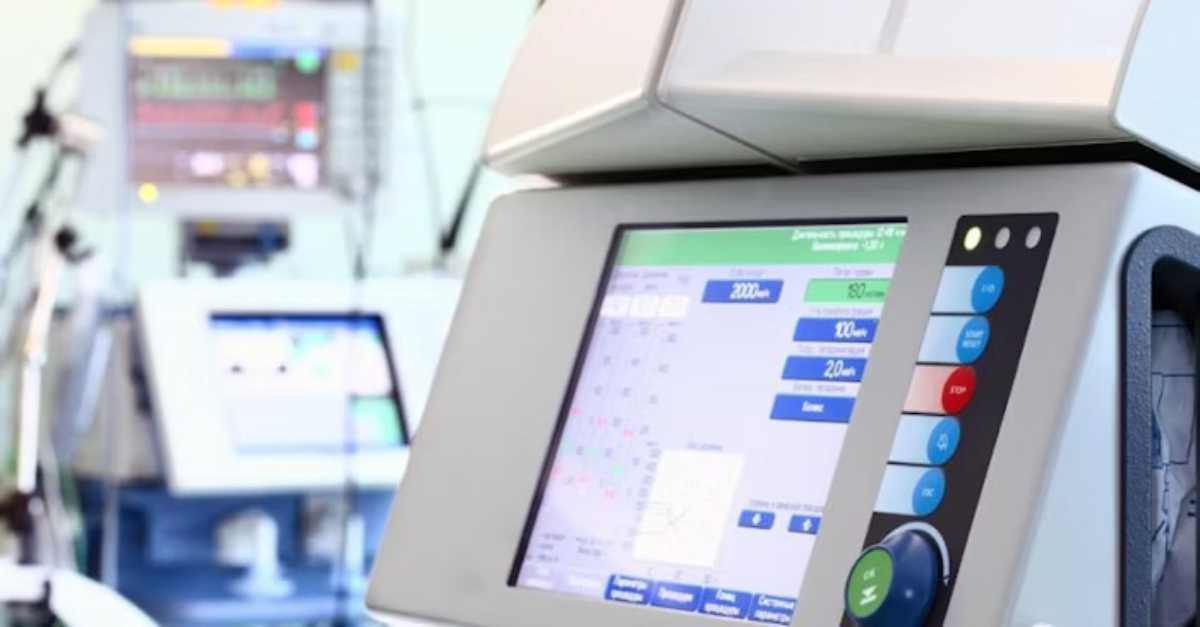
Three Reasons to Lease Vs. Buy Healthcare Equipment
In many instances, it's important that your healthcare facility has the most technologically advanced healthcare equipment. But should you lease or ...
Solutions
Workplace Management Solutions
Real Estate Management Solutions
Maintenance Management Solutions
Energy Management Solutions
Engineering Document Management Solutions
Asset Management Solutions
Automate campus scheduling for classes, meetings, and exams with our EMS software.
Plan and manage conferences effortlessly with EMS software to impress guests and streamline operations.
Boost workplace flexibility and maximize space use with seamless desk and room booking.
Organize workplace or campus events smoothly, creating memorable experiences.
Optimize workspace, manage allocations efficiently, and reduce costs with our space management solutions.
Deliver projects on time and within budget by improving communication, collaboration, and efficiency with our software.
Streamline lease accounting for ASC 842, IFRS, and GASB compliance.
Manage leases efficiently by tracking key dates, analyzing costs, and ensuring compliance.
Centralize data and analytics for better insights, faster negotiations, and revenue growth.
Centralize facility and asset maintenance, automate work orders, and ensure compliance with our CMMS software.
Extend asset life, reduce downtime, and prevent costly repairs with data-driven monitoring.
Prevent equipment failures and extend asset life by detecting and addressing issues early.
Make sustainable, cost-efficient energy decisions by monitoring and optimizing power consumption.
Remotely monitor and control equipment with real-time data to predict issues, boost efficiency, and reduce downtime.
Easily share and collaborate on documents, creating a single source of truth for engineers and contractors.
Manage and analyze assets across their lifecycle to schedule maintenance, reduce downtime, and extend lifespan.
Improve visibility, automate work orders, and ensure compliance for efficient facility and asset management.
Resources
Browse our full library of resources all in one place, including webinars, whitepapers, podcast episodes, and more.
Support
Looking for access to technical support, best practices, helpful videos, or training tools? You’ve come to the right place.
About Accruent
Get the latest information on Accruent, our solutions, events, and the company at large.

As millennials and members of Generation Z rise to prominence in the legal sector, their expectations for digital fluency are reshaping the professional landscape. Recent research suggests that younger generations view technology as integral to quality of life, workplace satisfaction, and productivity. Many prefer to work for firms that embrace modern digital tools and systems—highlighting a clear shift toward progressive, tech-enabled workplaces.
While undoubtedly disruptive, these digitally oriented and employee-driven changes are accelerating modernization and evolving how the legal sector operates.
While there are many technology-related innovations happening in the legal sector–everything from AI analysis of case files to document management systems–perhaps the most significant impact has been the shift to a hybrid working model, which has become the accepted practice for many legal businesses.
Hybrid working rose to prominence during the pandemic. What was initially borne out of necessity has since evolved into a long-term strategy that boosts employee morale, productivity, and retention, which is why 88% of law firms now support hybrid work arrangements. While this suggests hybrid working has been almost universally accepted in the industry, the reality is far less black and white. For example, in March 2025, it was reported that A&O Shearman implemented policies linking bonuses to office attendance, reflecting concerns that remote work may impede junior lawyers' productivity and professional development.
Part of the challenge facing the legal sector is a generational disconnect between technologically native millennials and Gen Zers and older, more established professionals who rose through the ranks when hybrid working wasn’t an option. While it is understandable that the latter may gravitate toward traditional models they are familiar with, today’s younger professionals have different expectations about how and where they work. Recent reports suggest that younger lawyers prioritize flexibility and work-life balance over presenteeism. Many of them experienced hybrid or remote learning environments during their education and have since entered the workforce during a time when hybrid work has become normalized. They are, in effect, both trained and conditioned to operate effectively in this model—a reality that extends well beyond the legal industry.
While both sides of the office debate have merit, it’s hard to argue against the benefits of the hybrid model. It offers lawyers flexibility in managing their time, reduces commuting hours and allows for better work-life balance in a notoriously labor-intensive environment. It also represents a level of flexibility that firms can offer to attract talent and foster a culture of productivity and innovation.
However, the debate surrounding the prominence of hybrid working is indicative of a bigger and more central issue for law firms. At a macro level, it’s not about hybrid vs in-office, but rather about having the right combination of workplace, talent, and business strategies to succeed today—while being equipped to attract and retain the workforce of tomorrow.
A key part of building the right strategies to succeed today—and to attract and retain the workforce of tomorrow—is rethinking the role of the physical office. Given its central influence on how and where legal work is conducted, the office space must evolve to support new ways of working. Optimizing offices requires striking a balance between traditional law firm dynamics and modern workplace flexibility. Firms must implement strategies that enhance collaboration and efficiency, while maintaining security and confidentiality. It must also address concerns around the training and development of junior lawyers in a hybrid environment.
To get this right means implementing a workspace booking and scheduling solution. Desk and office space booking allows lawyers to reserve spaces based on their needs. This not only meets employees “flexible office” expectations, but also helps employers identify high and low usage hours. This information, in turn, can be used to reconfigure the office space dynamically and manage people's flow. Centralized scheduling prevents conflicts, while also providing visibility, which is critical when cases involve multiple people.
With the proper workplace infrastructure in place, employees can access information more efficiently, collaborate seamlessly across teams and departments, and adapt to changing work environments more effectively. Designing a more engaging work environment results in increased productivity and improved job satisfaction, which can help boost the bottom line of the business.
A pertinent example of successful implementation details how a high-profile law firm partnered with Accruent. The firm sought to enhance its workspace management to support an effective hybrid work environment. Within three months, the firm saw a return on its EMS investment as it significantly reduced costs and increased productivity. It was also able to differentiate its brand by creating positive meeting experiences with prospects, partners, and customers.
Overall, investing in Accruent EMS allowed the firm to:
By leveraging flexible resourcing solutions, firms can attract and retain top talent while adapting to the evolving needs of a multi-generational workforce. It’s why optimizing workspaces has emerged as a pivotal strategy for superior service delivery – not just in how it works, but in how firms think about space, culture and technology.
How, when and where people work in the legal sector goes way beyond the proportionality of hybrid working or trying to appease opposing generational elements of the workforce. Instead, it is about redesigning legal businesses as dynamic, tech-enabled ecosystems that foster collaboration, learning, and client trust. It's not just about desks and schedules - it's about creating a workplace that works for lawyers, not against them.
Want to learn how Accruent can help your firm optimize for hybrid work? Let’s talk.
In many instances, it's important that your healthcare facility has the most technologically advanced healthcare equipment. But should you lease or ...
Changing standards affect all industries ― and especially healthcare. Explore the new FASB standards and learn how healthcare lease types will be ...
Explore how investing in a lease administration and management solution can help you simplify the process of adhering to key requirements set forth ...
Subscribe to stay up to date with our latest news, resources and best practices.
* To unsubscribe at any time, please use the “Unsubscribe” link included in the footer of our emails.